This recipe is super delicious and simple. With just one main ingredient and a couple of spices it takes only about 10-15 minutes to cook!
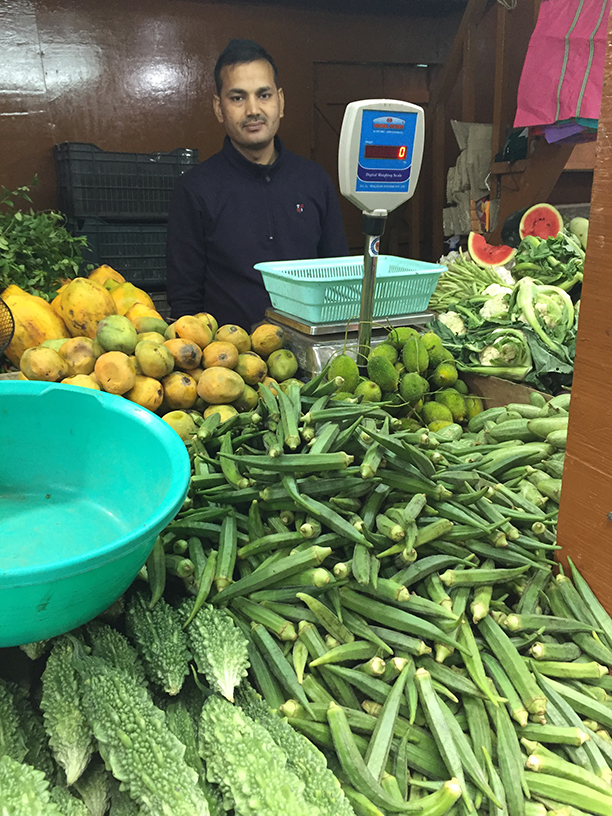
My favorite grocer at the Bazaar and his mountain of Bhindi. Today he even gave me a free slice of the watermelon. Tasty!
During my first month in Darjeeling, my co teacher Vishnu (from Bihar) loved to cook Bhindi, also known as okra or lady finger. So I have named this after his home state. Fortunately for me I love Bhindi too, and was always excited to come home for his meals. Often people are a bit put off by this delicious hot season vegetable because when it cooks, it can become a bit slimy. But this recipe I learned manages to keep the Bhindi in perfect form and avoids becoming mushy.
When I say slimy its not all bad, think of Chia or Flax when it gets in water, similar effect and it’s precisely this property which makes Bhindi so amazing. Its great for the digestive system, with lots of soluble fiber contributing as a prebiotic and aiding in elimination. In most of south India this dish is cooked with liquid, tomato or other veggies making its consistency change, but as you will notice in this recipe no water is added which is the key to keeping the Bhindi more firm.
Right now in Darjeeling at the Main Bazaar I can buy a kilo of Bhindi (about 2 pounds) for 40 rupees (60 cents) making it an incredible deal for cooking. In the US, it tends to be a bit more expensive, but if you can find an ethnic Asian/Indian grocery store or a farmers market you can get great Bhindi at a reasonable price. Some things to note, this vegetable has a tendency to spoil if not kept well ventilated and cool. So if you buy a bag of Bhindi at your local store and don’t plan on cooking it all right away keep it dry and and put it in a bowl or on a plate where it has lots of air circulation. Only wash it just before you are going to cut it up and cook. Also, when buying this vegetable make sure it’s firm, if soft it is not very fresh. Also the smaller the pieces the better; as the Bhindi gets large(can be 5-6 inches long) and thick it can become a little fibrous and is mostly hollow in the middle. So if you have the choice go for the small pieces. Sometimes at the market here I watch people sorting through a whole pile to find just the right pieces. I usually start our that way and give up before I get to a kilo just tossing them into the basket.
Recipe: Serves 4
1/2Kg/ 1pound Bhindi
15ml/ 1Tbsp Ghee or your preferred oil.
5ml/ 1tsp Cumin seed whole
1 dry whole red chili, stem removed (optional) actually in India it’s not optional, but if you are trying to stay more sattvic add some ground black pepper to taste with the rest of the dry ingredients.
10ml/ 2tsp chopped fresh ginger
5ml/ 1tsp coriander powder
2.5ml/ .5tsp Tumeric powder
5ml/ 1tsp Sea Salt or Mineral Salt (more or less to taste)
Say a prayer or recite a mantra before you begin/during cooking to add the most important ingredient to your meal, lots of Love!
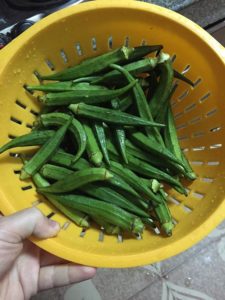
Washed and ready to cut.
1. Rinse Bhindi and drain water, slice off the end where the stem connects, and cut into roughly 1/2 inch/ 1cm pieces. If you want it to cook faster cut it smaller. Now you are half way there, see how easy it is?
2. In a thick bottom pan or wok on medium-hi temp, heat oil, then add cumin seeds and optional whole chili and cook until the seeds just start to pop. Then add ginger and stir for 15 seconds or until the ginger starts to smell good. (This whole step only takes about 1-2minutes max)
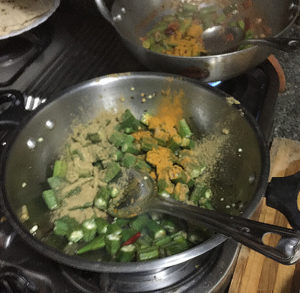
Adding the dry spices.
4. Now the Bhindi is half cooked so you can add the dry spices and salt, sprinkle on top and stir in.
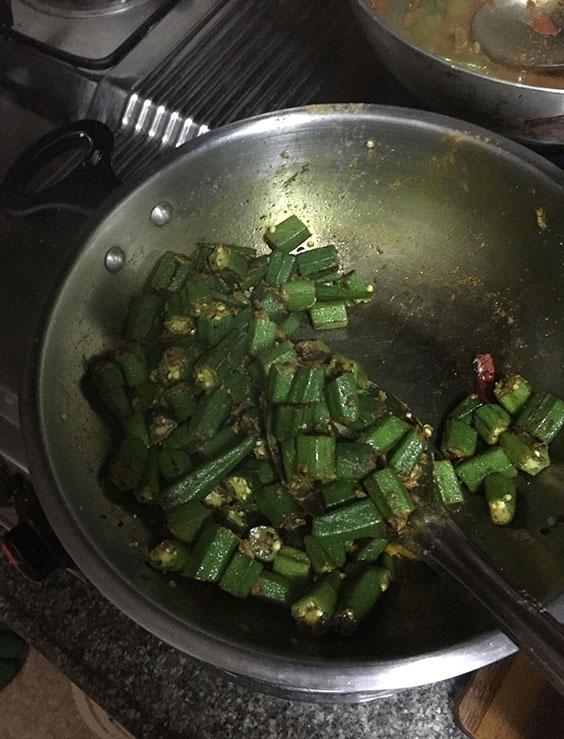
Stir Stir Stir, Don’t let it stick too much.
5. Keep stirring and scraping the pan so the spices don’t stick, the Bhindi should be pretty dry here but if you want you may add a little more oil, in 4-5 minutes taste one piece to see if it’s soft enough. If not, let cook a little longer. Just keep stirring and scraping the pan until you like the texture. The part you scrape off the pan has the best flavor so make sure it all gets into the serving bowl!
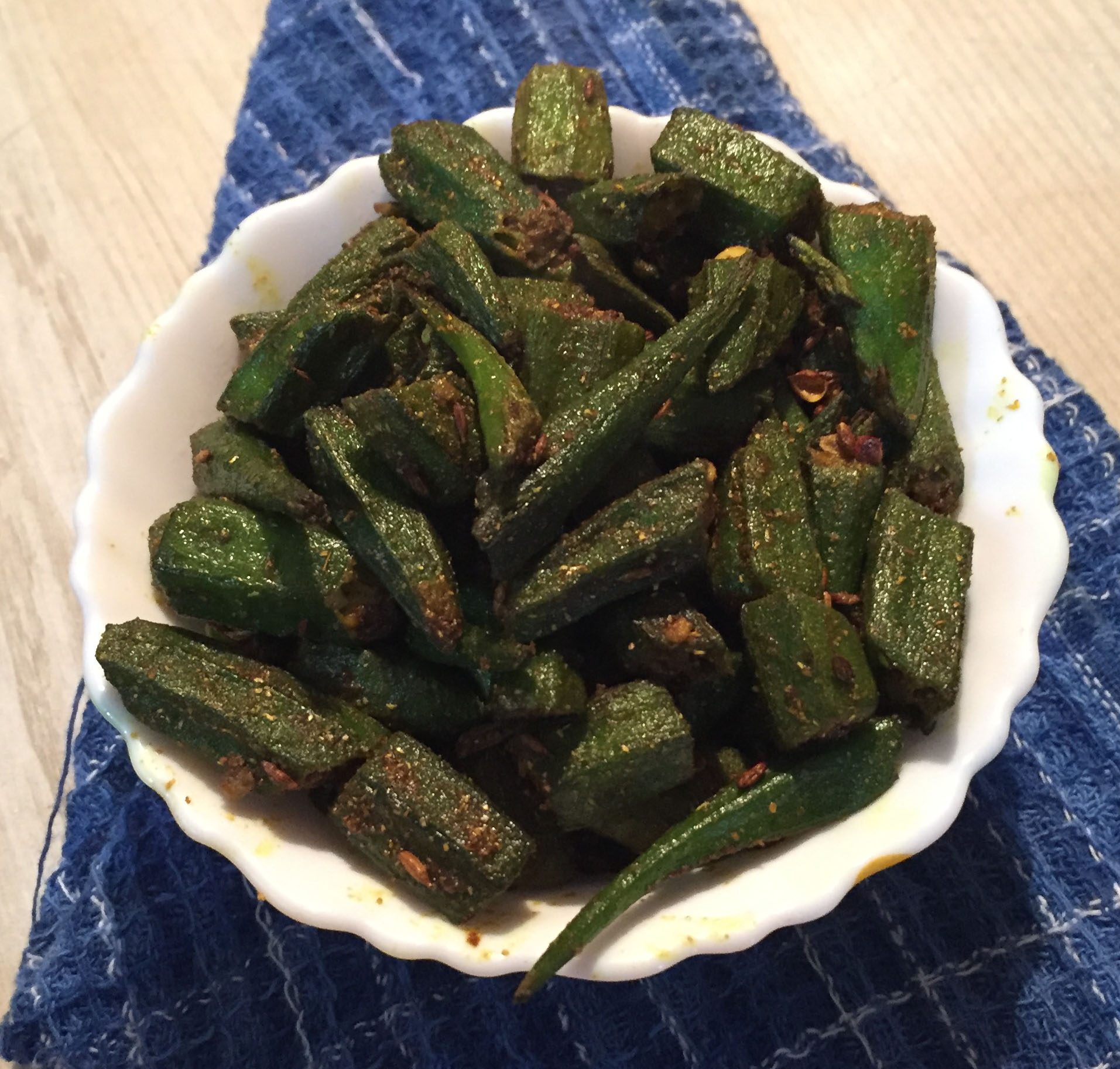
6. Big Smile! You’re done, Enjoy!




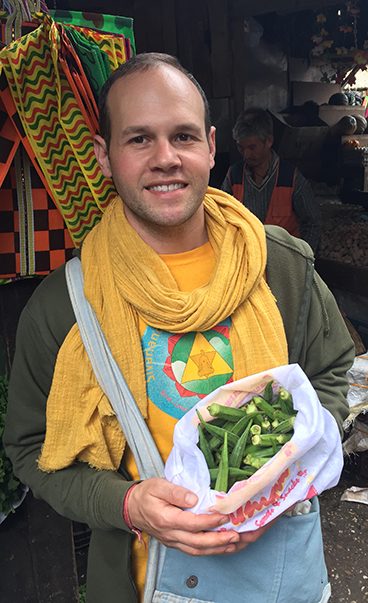
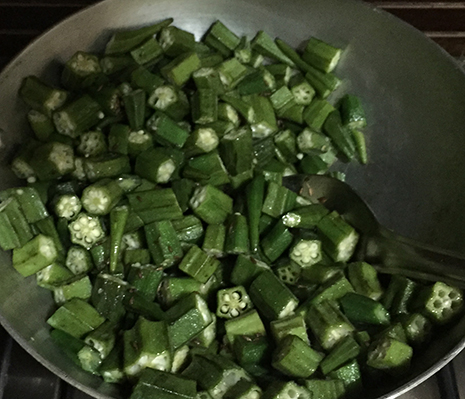
Yum!! I was very lucky to have this cooked for me more than once 🙂 I will certainly vouch for its tastiness and good texture. Looking forward to using a kitchen to try cooking my own. Thanks for the recipe.
Thanks Max, Hope your journey is going well and when you find a kitchen send us a photo of your dish. Om Shanti
I have tried this out on the family a few times with good response, however, I substituted bhindi with seasonal veg here in the UK – mostly green beans – and it works just great too 🙂 Indian flatbreads are a hit as well. Pics next time… Om.
Om Max, awesome that you made it back to he UK and are cooking! Would love to see a picture, thanks for the updates. Actually tonight in Vietnam I cooked the okra recipe without the cumin and at the end added some soy sauce and sesame seeds for an East Asian version. If you are using green beans or similar veggies when they are about half cooked or so you can add a few small diced tomatoes and it makes a nice sauce. Its also good with the okra but it gives it a little more of the soft texture. Unfortunately here in Dalat we cannot easily get whole wheat flour but when I get back to a bigger city I will make a post on Chapati too, thanks for the reminder. Keep on cooking! Om Shanti